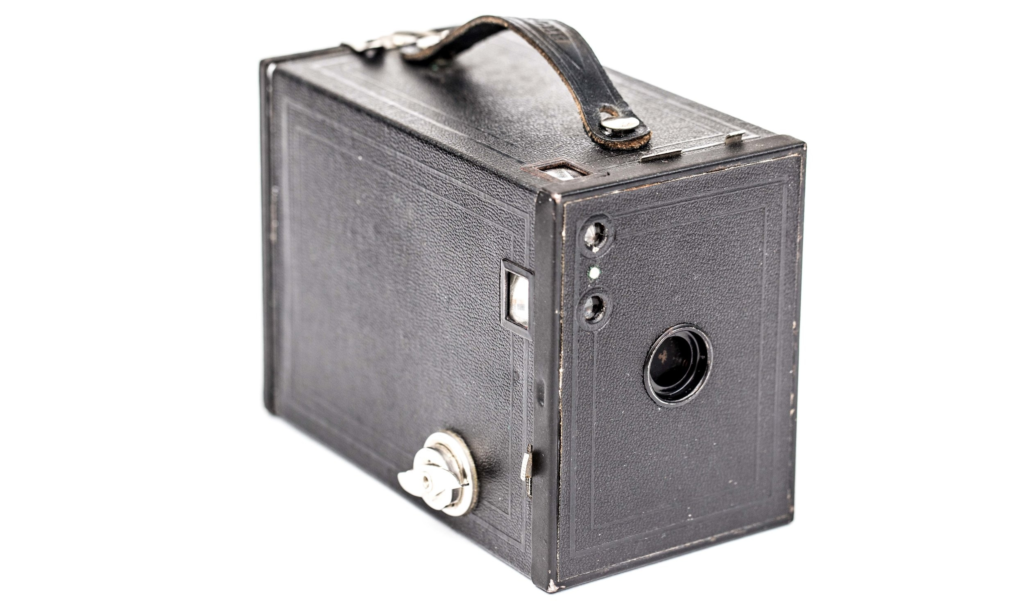Camera Obscura
The camera obscura is a device that is sort of an early version of a camera. It works on the principle of letting light through a small hole, therefore projecting everything upside-down outside on a surface inside a dark room. People figured out this trick as far back as ancient times, first mentions coming from the Chinese and Greek. It wasn’t until the Renaissance, however, that it really hit its stride with the help of artists and scientists who used the device to study the way light and perspective function. For many centuries, it was an essential tool for artists and scientists alike, and eventually some of its concepts would be used to create photography as it stands today.

Nicephore Niepce
Nicéphore Niépce is generally considered an early pioneer in photography who invented the first photography procedure that worked. He captured what has come to be considered the world’s first permanent photo, View from the Window at Le Gras, using a photography method called heliography. Until recent times, however, Niépce was not widely credited as the first photographer. His work was then overtaken by Louis Daguerre, who perfected the process and made it famous with the daguerreotype. For this reason, Daguerre was considered the major developer of photography, while the role of Niépce was brought out fully only much later.

Henry Fox Talbot
Henry Fox Talbot perfected the early photographic process known as Photogenic Drawing, where he placed an object directly onto light-sensitive paper and exposing to sunlight created a silhouette or “drawing” of that subject. This was an important step in photography’s development since now multiple prints could be realized. Talbot also used small wooden cameras small enough to hold in one’s hand-whom he referred to as “mousetraps.”. These cameras incorporated a lens that focused the light onto the light sensitive paper inside to create a negative image. He could put the negative on another sheet of paper and make positive copies, a technique which would set the stage for modern photography.

Daguerreotype
Daguerreotype was a process invented in 1839 by Louis Daguerre. In this process, pre treated polished silver coated copper plate was exposed to iodine vapours to make it photosensitive and then to light followed by development in mercury fumes. This would give highly detailed but unique images on a reflective surface. This yielded an extremely sharp image but with a great limitation. Each photograph was unique and unrepeatable, the process being cumbersome and hazardous since it incorporated mercury. Henry Fox Talbot’s system incorporated negatives in combination with Photogenic Drawing to allow for multiple copies of an image, Talbot’s method was thereby more practical and adaptable for wide use.

Richard Maddox
Richard Maddox was an English photographer who invented the dry plate process in 1871. Before his invention, photographers used wet plates that had to be prepared and exposed while still wet, which was cumbersome and time-consuming. Maddox’s dry plates were coated with a gelatin emulsion that could be stored for longer periods and didn’t require immediate development. This innovation made photography much more practical, as it allowed photographers to prepare their plates in advance and develop them later, greatly increasing flexibility and convenience. Maddox’s dry plate process was a major leap forward for photography, paving the way for the development of modern photographic films and making photography more accessible and efficient for both professionals and amateurs.

George Eastman
George Eastman changed photography by making the photo camera accessible to all. Before his improvements, photography was rather complicated and required very expensive equipment. Eastman managed to change that with his invention of the Kodak camera in the year 1888. Such a camera was easy to use; it was preloaded with films and allowed people to take their photos and then send the entire camera to Kodak for developing and printing. This slogan coined the “You press the button, we do the rest” approach, making photography easy and within the economic reach of the general masses. In this process, he established a company known as Eastman Kodak Company, which soon emerged as a multinational photographer company and played a very important role in popularizing photography as one of the characteristics of everyday life.

Kodak (Brownie)
The Kodak Brownie was a popular series of cameras introduced by the Eastman Kodak Company, founded by George Eastman. The Brownie cameras were affordable, simple to use, and played a significant role in popularizing photography among the general public. They were designed for amateur photographers and allowed people to capture moments easily. The Brownie cameras used roll film, making photography more accessible and enjoyable for a wide audience. The simplicity and affordability of the Brownie cameras contributed to the democratization of photography as a hobby and art form.

Digitial Photography
Digital Photography is a modern method of capturing images using electronic sensors to record light. It became popular in the late 20th century as technology advanced. Instead of film, digital cameras store images as electronic data. When a photo is taken, the sensor converts light into digital information, which is then stored on a memory card. This digital data can be easily transferred to a computer for viewing, editing, and sharing. Digital photography revolutionized the way we take and interact with images, offering instant feedback and the ability to manipulate photos easily.

